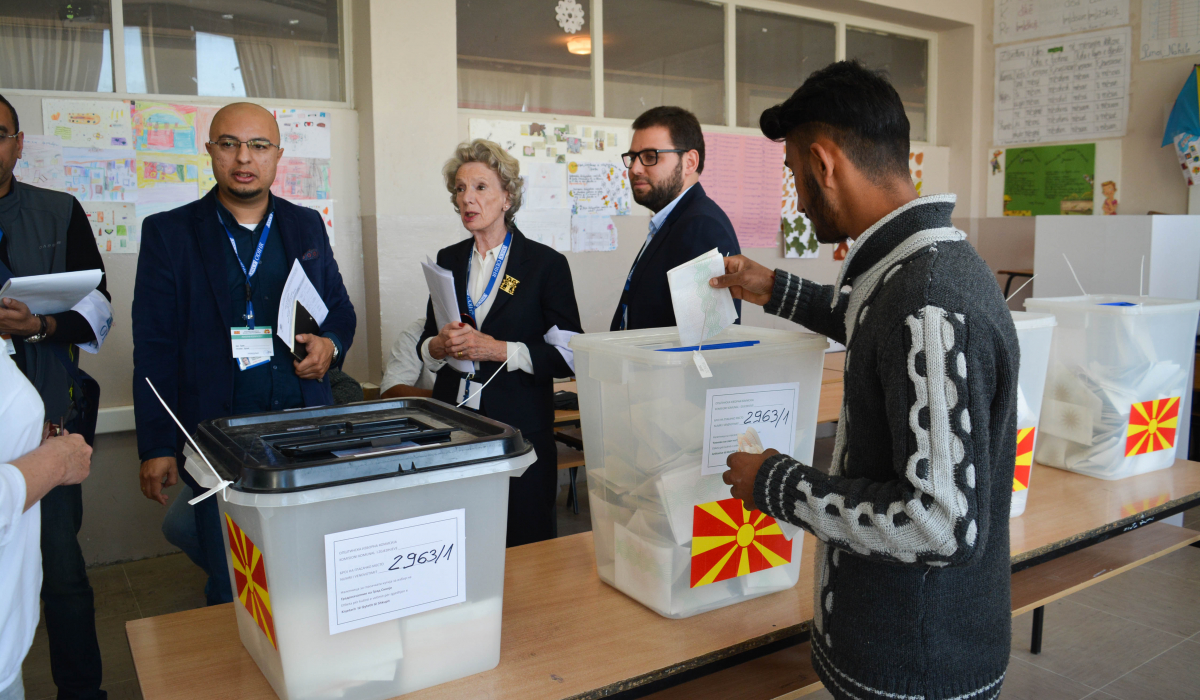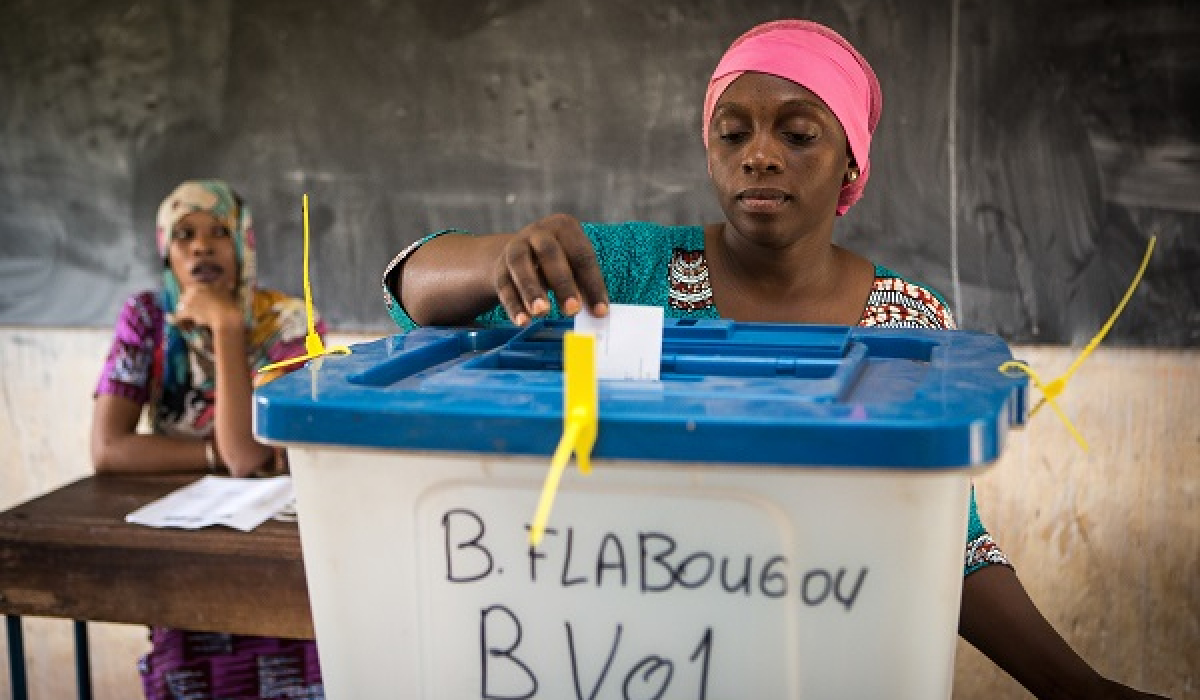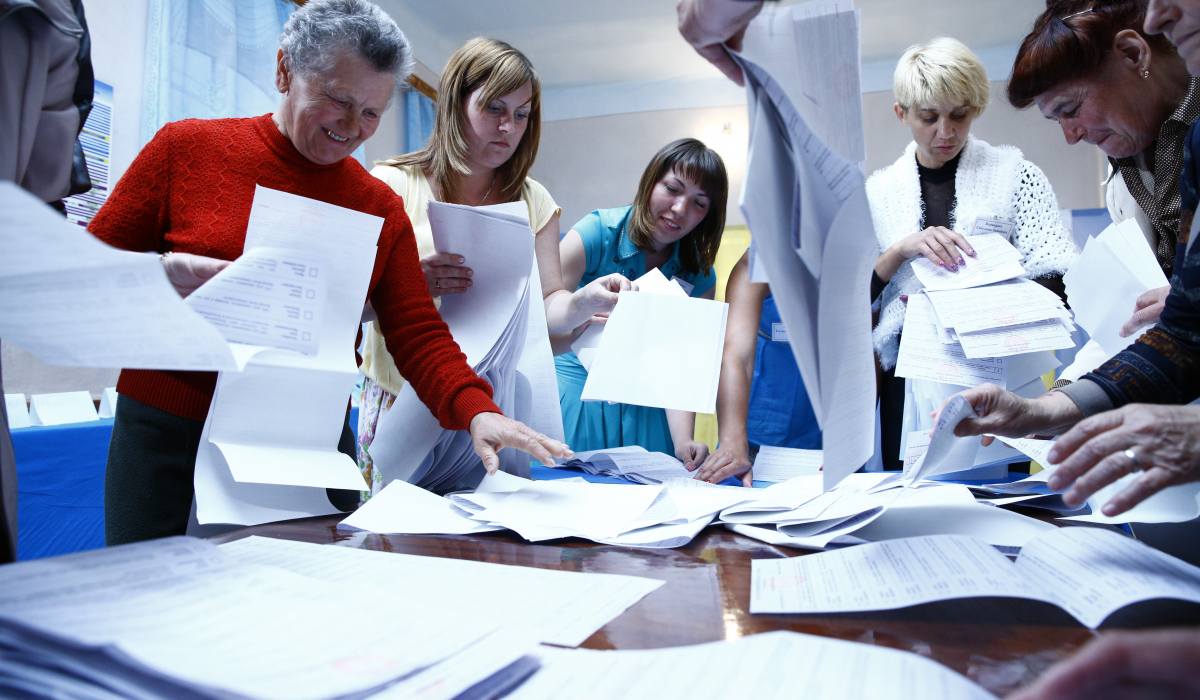What is an Election Observation Mission?
Election observation is one of the core instruments for promoting democracy and human rights. As the German focal point for election observation activities, we support EU and OSCE/ODIHR missions on behalf of the Federal Foreign Office.
Definition of an election observation mission
During an election observation mission, a group of independent international observers monitors the electoral process in order to critically assess the electoral process on the basis of international standards and the national legislation of the host country. These missions make an important contribution to crisis prevention: They can demonstrate international interest, strengthen public confidence in the electoral process and expose potential irregularities. Election observation can thereby foster transparency and acceptance among all parties concerned and contribute to political stabilization, especially in transition and post-conflict countries.
International election observers are guests of the host country for the duration of their assignment. The missions require a formal invitation. The parameters of the mission (e.g. observers’ unrestricted access to all parties and stages of the electoral process) are agreed on in a “memorandum of understanding” between the government of the country where elections are taking place and the organization sending the observers. In return, observers commit themselves to neutrality and objectivity.
International standards are documents such as international treaties, declarations or comments that form the basis for observing an election. Election observers also have their own internationally recognised code of conduct, to which they are bound when working in an election observation mission.
»Building democracy is a complex process. Elections are only a starting point but if their integrity is compromised, so is the legitimacy of democracy.«
In addition to international organizations such as the EU, ODIHR or the Organization of American States (OAS), election observation missions are also carried out by local and international non-governmental and civil society organizations such as the Carter Center. International and local election observers frequently consult with each other on the ground.
The Office of Democratic Institutions and Human Rights (ODIHR) is the human rights organisation of the OSCE. Over 90% of all German election observers are assigned to a mission through ODIHR. ODIHR conducts an average of 30 election observation missions per year.
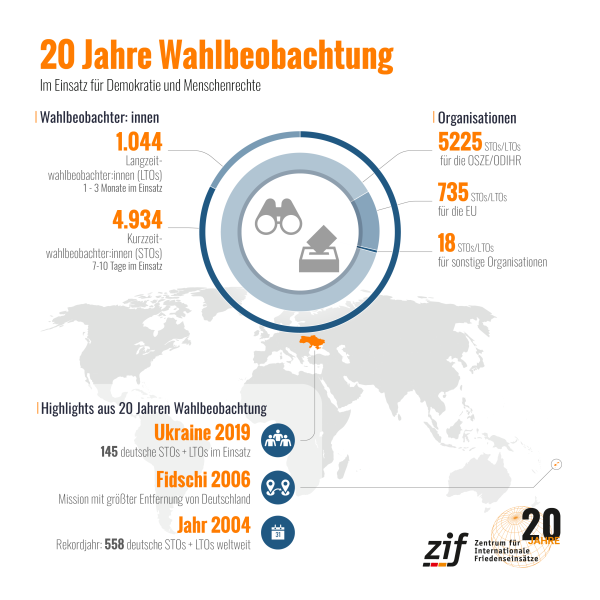
We are the German focal point for international election observation missions
The Center for International Peace Operations is the German focal point for international election observation missions. On behalf of the Federal Foreign Office, we regularly train, recruit and send German election observers to election observation missions of the OSCE/ODIHR and EU. Since ZIF was founded in 2002, we have sent over 5,000 election observers on 300 different missions. The basis of this activity is the voluntary commitment of the many election observers actively working on all continents to promote democracy and respect for human rights. Our specialised training courses prepare short-term and long-term election observers for their tasks.
The Development of Election Observation Missions
Election Observation Missions of ODIHR and EU
The OSCE/ODIHR has been deploying election observation missions since 1991. For purposes of long-term planning, ODIHR has set up a public elections calendar on its website. Since the 2000s, election observation missions have been deployed to western or established democracies as well. Prominent examples of this are the ODIHR missions to the United States. Germany also regularly hosts international experts from ODIHR and other international organisations, who mainly monitor certain aspects of parliamentary elections.
The EU has been conducting election observation missions since 1993, but only for elections taking place outside of the EU. An established division of labour exists between the two organisations: The OSCE monitors elections in its participating states, while the EU can potentially conduct election monitoring in all other countries. With the project Election Observation and Democracy Support (EODS), the EU operates its own training project in the area of election observation.
Election monitoring missions can look back on a 150-year history. The first documented election observation mission took place in 1857, when a group of Prussian, British, French and Ottoman representatives observed the general elections in the principalities of Moldavia and Walachia. Despite the historical roots, it was not until after the end of the Cold War that election observation became an established instrument and attained the political significance it has today. In addition to ODIHR and the EU, NGOs such as the Carter Center or regional organisations such as the Economic Community of West African States (ECOWAS) carry out election observation missions on a regular basis.
Five facts about our partners in election observation:
OSCE/ODIHR
- Founded in 1991, headquarters in Warsaw
- 57 participating states – from Vancouver to Vladivostok
- Only deploys missions to OSCE participating states
- Over 90% of all German election observers are assigned to a mission through ODIHR
- Conducts an average of 30 election observation missions per year
EU
- Has been deploying its own election observation missions since 1993 – albeit only outside of the EU
- First election observation mission in 1993 in the Russian Federation
- EODS is the EU’s own training project in the area of election observation
- All EU recommendations at a glance: the EU database
- Since 2000 over 150 missions have been conducted around the world
Election observation missions have become much more professional over the past two decades. Large-scale election observation missions conducted by ODIHR and the EU usually feature these structures:
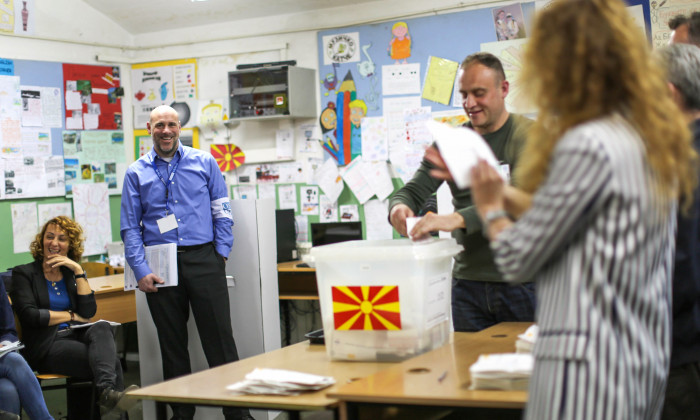
»The role of an LTO therefore requires a broad array of analytical and organizational skills. The work of an LTO is challenging but equally enriching.«
Structure of an Election Observation Mission
Core Team
The Core Team is responsible for the coordination of the mission on the ground. It is deployed to the host country several weeks before the election and prepares, among other things, the work of the Long-term Observers (LTOs).
Long-Term Observers (LTOs)
The so-called Long-term Observers establish contact with electoral authorities, political parties, candidates, civil society, and other actors throughout the country. The core team evaluates this information at the country level.
Short-Term Observers (STOs)
Several days before election day, a larger group of Short-term Observers arrive in the country to observe polling stations and vote counting procedures on the actual election day. They collect information without intervening in the proceedings. All findings and assessments, as well as suggestions for improvement, are published in a final report.
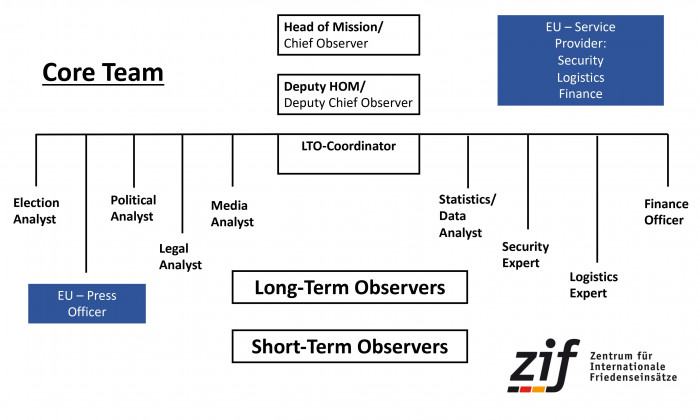 ©ZIF
©ZIF
In 2005, an internationally recognised methodology for election observation was established with the UN Declaration of
Principles for Election Observation.
There is also an international
On Your Way to an Election Observation Mission
Do you want to help promote democratic values? ZIF offers German nationals the chance to volunteer for election observation missions in other countries, as well as
- Professional training and preparation,
- Extensive support, and
- International experience.
